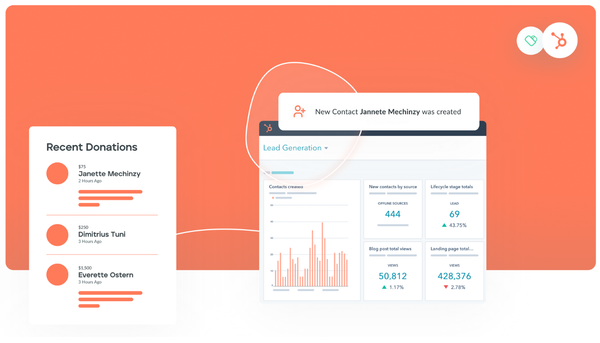4 Top Tips for Being Financially Savvy as a Nonprofit

This post was contributed by ClickTime.
Nonprofits everywhere are used to working on a pretty tight budget. Now, as a result of the COVID-19 pandemic, those budgets may continue to shrink. So how can you sustain operations and keep pursuing your mission in light of shortcoming revenue?
Whether you’re a newly incorporated nonprofit or an established pro looking to adjust your strategy in response to a crisis, it’s important to set up and maintain financially savvy practices. This way, you can make the most out of your (and your donors’!) money.
There are a lot of big changes going on recently. With the rise of social distancing and a sweeping move to remote operations, you might be concerned about how to handle the transition while staying on a budget.
While there are both pros and cons of working from home in terms of finances and productivity, there are a few ways to make sure your nonprofit is spending wisely— both during this time and into the uncertain future. As a nonprofit organization looking to save time, money, and resources, you should:
1. Know exactly where your money is going.
2. Recruit and use volunteers effectively.
3. Establish effective virtual fundraising practices.
4. Invest in valuable nonprofit software solutions.
Transitioning to financially savvy practices now will only go to help you out in the future! This way, you know that your funding is going toward worthwhile expenses in a way that is sustainable in the long run. Ready to get started? Let’s jump in.
1. Know exactly where your money is going.
If your nonprofit is operating on a limited budget and most are, it’s crucial that you know where your money is going. This means it’s no longer good enough to use crude estimates and basic percentages as you create and abide by your nonprofit’s budget.
Did you know that a large portion of nonprofit overhead costs goes to paying staff salaries? If you want to really break your budget down, it can be helpful to know which staff members are working on which projects, and collect accurate data concerning the time and costs spent on various tasks.
That’s where effective time tracking practices come in. Whether your organization has already begun to track employees’ working hours or this is a new concept you’d like to implement, here are a few tips for ensuring success:
- Adopt specific timesheet software to simplify the time tracking process for everyone involved by offering an intuitive, easy-to-use interface.
- Gain access to employee timesheet data to streamline the reporting process for certain revenue sources, including grant-giving foundations and donor funding.
- Avoid over- or under-staffing with accurate estimates concerning day-to-day operations and employee workflows.
- Promote employee productivity by setting reasonable goals, prioritizing certain tasks and projects, and making sure nothing slips through the cracks.
Thanks to these perks along with many others, tracking employee time is one of the best ways to manage your organization’s budget while keeping overhead costs in check. This can be especially useful while employees are working from home. For more information, take a look at ClickTime’s guide to nonprofit time tracking!
2. Recruit and use volunteers effectively.
Part of developing a productive nonprofit and staying on budget is effectively managing your volunteers. After all, for every task that is completed by a volunteer, it’s one less to assign to a paid employee.
However, many organizations struggle to effectively utilize their volunteers. Dedicated volunteers are a great resource to have, but if you don’t use their time wisely, it’s no help to anyone. Volunteers are not likely to keep returning if they feel their time is being wasted, and for good reason!
That’s why it’s a good idea to implement your timesheet software for your volunteers as well as your paid staff. This way, you can assign volunteers to various tasks, and they can get their work done without constantly needing to check in.
With the current social distancing guidelines and many organizations working remotely, recruiting and utilizing volunteers is probably going to look different for a while. However, now is a great time to implement virtual volunteer programs and seek dedicated supporters that are willing to help out in some sort of online capacity.
For more on recruiting, using, and sustaining effective volunteers for your organization, check out Double the Donation’s guide to volunteer management. Loyal, devoted volunteers are one of the greatest resources a nonprofit can have, so be sure to maximize their impact any way you can!
3. Establish effective virtual fundraising practices.
As nonprofits everywhere cancel major fundraising events, it can lead to panic concerning revenue going forward. But just because you can’t host an in-person event as planned, doesn’t mean you have to cancel altogether!
Instead, nonprofits are quickly looking for the best ways to move their fundraising efforts to the virtual realm and maintain a steady stream of revenue despite the disruption. However, with so many nonprofits moving to online fundraising ideas, it can be hard to make your own fundraiser stand out.
Here are some best practices to ensure your campaign breaks through the online clutter:
- Use digital marketing tools to get the word out.
- Make sure your online fundraisers are mobile-friendly.
- Encourage supporters to share with friends and family.
- Host unique and engaging campaigns and events.
Thanks to the rise of the internet, your fundraisers now have the opportunity to reach a significantly larger audience than ever before. Even if you’re just moving to the virtual fundraising sphere as a result of COVID-19, it’s a great practice to take advantage of going forward as well!
4. Invest in valuable nonprofit software solutions.
To run an effective nonprofit, it’s important to invest in a solid foundation of software to get you started. Working with outdated technology and lacking the right tools are two of the biggest ways to waste your time and money.
Instead, making a small investment in effective nonprofit software now can allow you to reap far greater rewards in the future! Here are four types of nonprofit software you should have:
-
Online donation platform: With effective online donation tools, donors can give anytime and from anywhere they’d like. That means you can quickly and easily accept gifts and sustain your fundraising revenue. Plus, the right tools will give donors the option to cover the processing fee, so that your mission receives their full donation!
-
CRM: A CRM, or constituent relationship management tool, is the best way to collect and organize your donor data. This way, you can build strong relationships with supporters that keep coming back to give more! To learn more about choosing the perfect nonprofit CRM, click here.
-
Communication tools: Effective communication with your donors, volunteers, employees, and constituents are each vitally important for maintaining a successful organization. Plus, with the right tools you can streamline correspondence and save time and money by doing so!
-
Timesheet software: As previously stated, timesheet software is crucial for ensuring effective employee workflows and keeping everyone on track to meet your organization’s goals! Not only does it help you budget more accurately, but you can more easily notice areas for improvement.
With these types of tools in your nonprofit toolkit, you’ll have everything you need to keep moving forward even in the midst of a pandemic.
As you adopt new financial practices and adjust existing ones, it’s important to remember the mission your organization is striving toward. Not only does effective financial management keep your doors open and your job safe, but it also provides you with the funding necessary to make your community a better place. Good luck!
Author: Ernest Cheng
Ernest Cheng is a San Francisco-based marketing professional who focuses on technologies that drive performance. He is currently the Head of Marketing at ClickTime, an award-winning time tracking platform for nonprofits, billable professionals, and growing businesses in over 65 countries.





